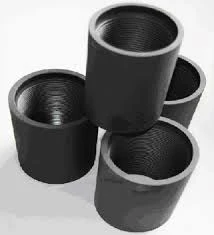- Afrikaans
- Albanian
- Amharic
- Arabic
- Armenian
- Azerbaijani
- Basque
- Belarusian
- Bengali
- Bosnian
- Bulgarian
- Catalan
- Cebuano
- Corsican
- Croatian
- Czech
- Danish
- Dutch
- English
- Esperanto
- Estonian
- Finnish
- French
- Frisian
- Galician
- Georgian
- German
- Greek
- Gujarati
- Haitian Creole
- hausa
- hawaiian
- Hebrew
- Hindi
- Miao
- Hungarian
- Icelandic
- igbo
- Indonesian
- irish
- Italian
- Japanese
- Javanese
- Kannada
- kazakh
- Khmer
- Rwandese
- Korean
- Kurdish
- Kyrgyz
- Lao
- Latin
- Latvian
- Lithuanian
- Luxembourgish
- Macedonian
- Malgashi
- Malay
- Malayalam
- Maltese
- Maori
- Marathi
- Mongolian
- Myanmar
- Nepali
- Norwegian
- Norwegian
- Occitan
- Pashto
- Persian
- Polish
- Portuguese
- Punjabi
- Romanian
- Russian
- Samoan
- Scottish Gaelic
- Serbian
- Sesotho
- Shona
- Sindhi
- Sinhala
- Slovak
- Slovenian
- Somali
- Spanish
- Sundanese
- Swahili
- Swedish
- Tagalog
- Tajik
- Tamil
- Tatar
- Telugu
- Thai
- Turkish
- Turkmen
- Ukrainian
- Urdu
- Uighur
- Uzbek
- Vietnamese
- Welsh
- Bantu
- Yiddish
- Yoruba
- Zulu
seating nipple tubing
The Importance of Seating Nipple Tubing in Oil and Gas Operations
In the oil and gas industry, efficient and reliable production is imperative. Central to this production is the role of tubing, specifically seating nipple tubing, which plays a crucial part in the safety and efficiency of downhole applications. Understanding the significance of this component and how to optimize its performance can greatly enhance overall operations.
What is Seating Nipple Tubing?
Seating nipple tubing is a specialized type of tubing used in well completion and production systems. It is primarily designed to securely hold downhole equipment such as plugs, packers, and valves in place. The seating nipple provides a critical connection point that ensures these tools function correctly during the various phases of production, from initial extraction to potential well intervention operations.
Design and Functionality
The design of seating nipple tubing involves precision engineering to accommodate various downhole conditions. These nipples are typically made from high-strength materials that can withstand the extreme pressures and temperatures found in subterranean environments. The tubing often features specific profiles and locking mechanisms that enable easy installation and retrieval of downhole tools, ensuring that operators can maintain control of the wellbore environment.
One of the key functionalities of seating nipple tubing is to prevent fluid bypass
. By securing plugs and packers, the seating nipple minimizes the risk of unwanted fluid movement, which could lead to inefficiencies and safety concerns. This feature is particularly vital in production scenarios where multiple zones may be developed simultaneously, requiring precise management of flow to avoid contamination and pressure loss.Advantages of Using Seating Nipple Tubing
1. Enhanced Safety The integrity of a well is fundamental to the safety of operations. Reliable seating nipple tubing can prevent well control issues associated with fluid migration, reducing the likelihood of blowouts or other hazardous incidents.
seating nipple tubing

2. Operational Efficiency With properly functioning seating nipples, operators can execute interventions and modifications with greater ease, minimizing non-productive time (NPT). This efficiency translates to cost savings, which is essential in the competitive oil and gas landscape.
3. Versatility Seating nipple tubing can be designed for various applications, whether they're for single or multi-zone completions. This versatility allows operators to customize their systems based on specific field requirements, making it an adaptable solution for diverse conditions.
Best Practices for Installation and Maintenance
To ensure the optimal performance of seating nipple tubing, certain best practices should be adhered to during installation and maintenance. First and foremost, thorough inspections should be conducted prior to installation to identify any signs of wear or damage. Any defects can compromise the integrity of the entire system and lead to costly failures.
Moreover, ensuring proper alignment during installation is crucial. Misalignment can lead to sealing issues and increase the risk of operational problems in the future. Operators should also establish a routine maintenance schedule to monitor the condition of the tubing and associated components regularly.
Training personnel on the specifics of seating nipple tubing, including its installation and potential failure modes, can further enhance safety and efficiency. A well-informed team can troubleshoot issues more effectively and make informed decisions regarding interventions.
Conclusion
Seating nipple tubing is an essential component in the oil and gas industry, providing stability and safety for downhole operations. By understanding its design and functions, recognizing its advantages, and adhering to best practices in installation and maintenance, operators can significantly enhance the safety and efficiency of their production systems. In a constantly evolving sector, prioritizing such components is vital for ongoing success and operational integrity.
-
Tubing Pup Joints: Essential Components for Oil and Gas OperationsNewsJul.10,2025
-
Pup Joints: Essential Components for Reliable Drilling OperationsNewsJul.10,2025
-
Pipe Couplings: Connecting Your World EfficientlyNewsJul.10,2025
-
Mastering Oilfield Operations with Quality Tubing and CasingNewsJul.10,2025
-
High-Quality Casing Couplings for Every NeedNewsJul.10,2025
-
Boost Your Drilling Efficiency with Premium Crossover Tools & Seating NipplesNewsJul.10,2025







